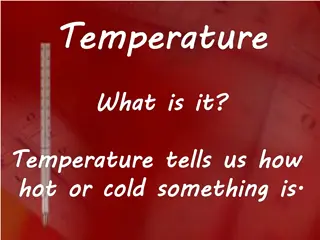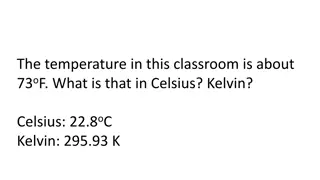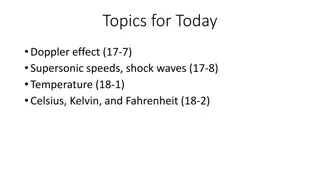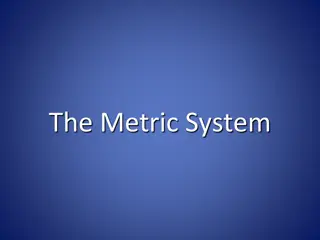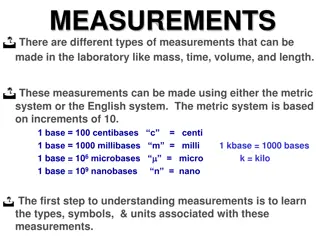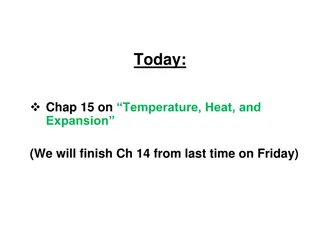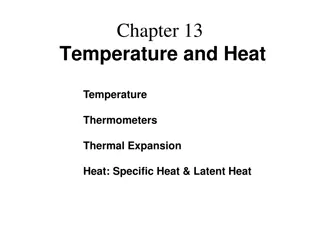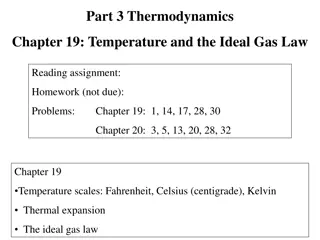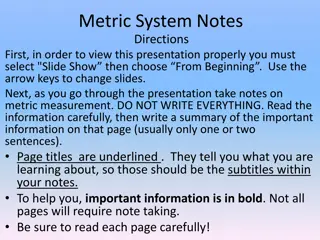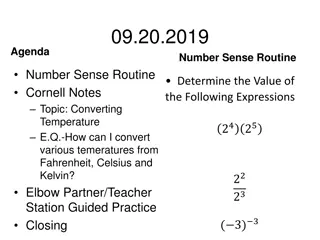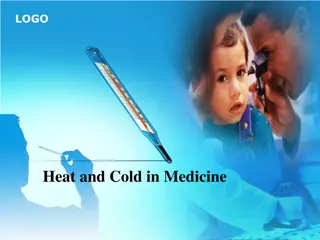Influence of Environmental Factors on Sound Pressure Levels
In this study, the relationship between sound pressure, particle velocity, and the acoustic impedance is explored in the context of varying humidity, temperature, and barometric pressure. The ideal gas law is used to determine the density of both dry and humid air, considering parameters such as par
1 views • 14 slides
Exploring Temperature: Facts, Measurement, and Scales
Understanding temperature is crucial in daily life. This content delves into the definition, measurement, and scales of temperature, highlighting key facts such as body temperature, freezing and boiling points of water, and extreme temperatures like those found in lightning and the sun. Discover how
1 views • 9 slides
Understanding the Software Development Process for Programmers
Learn about the 7 major steps involved in writing programs, from problem analysis and program specification to design, implementation, debugging, testing, and maintenance. Get insights on how to approach software development systematically and effectively. Explore an example problem of converting te
0 views • 22 slides
Understanding Basic Concepts of Chemistry
Matter is defined as anything that occupies space and possesses mass. It can exist in three physical states: solid, liquid, and gas. Mass is the amount of matter in a substance, while weight is the force of gravity on an object. Temperature quantitatively expresses hot and cold, measured in Celsius,
4 views • 14 slides
Understanding Thermal Energy and Heat Transfer in Physics
Measurement conversion of temperature to Celsius and Kelvin, explanation of temperature as kinetic energy, internal energy in gases, types of heat transfer (conduction, convection, radiation), thermal conductivity, energy transfer through glass windowpane, and cost estimation of energy loss. Explore
0 views • 7 slides
Exploring Doppler Effect, Supersonic Speeds, and Temperature Scales
Discover the fascinating concepts of Doppler effect, supersonic speeds, and temperature scales like Celsius, Kelvin, and Fahrenheit. Dive into the interactions of sound waves with moving sources, shock waves at supersonic speeds, and the differences in musical notes produced by various instruments.
0 views • 15 slides
Supercooling Different Types of Water Experiment
This experiment explores the process of supercooling different types of water to understand which type can maintain a liquid state below zero degrees Celsius. The procedure involves cooling the water below its freezing point without it solidifying, aided by adding ice and monitoring temperatures. Th
1 views • 18 slides
Understanding The Metric System: A Simple Guide
The Metric System is a decimal system used for scientific measurements, with base units like meter, liter, gram, Celsius, and second. This system includes prefixes like kilo, hecto, deka, deci, centi, and milli, making conversions easy. Discover how to measure length, volume, mass, temperature, and
2 views • 24 slides
Understanding Laboratory Measurements: Types, Units, and Symbols
Different types of measurements such as mass, time, volume, and length can be made in the laboratory using the metric or English system. Learn about the units, symbols, and instruments associated with these measurements for length, mass, volume, temperature, time, heat, and pressure. Explore how to
0 views • 15 slides
Climate Change Policy Initiatives in the UK
The UK has committed to reducing greenhouse gas emissions by 100% of 1990 levels by 2050 through the Climate Change Act 2008. This act includes setting carbon budgets and targets as stepping stones towards achieving net-zero emissions. The Paris Agreement further emphasizes the need to limit tempera
0 views • 24 slides
Understanding Temperature, Heat, and Expansion in Physics
Exploring the concepts of temperature, heat, expansion, and thermal equilibrium in the context of kinetic energy, energy transfer, and thermometer operation. Different temperature scales like Celsius, Fahrenheit, and Kelvin are discussed, along with the distinction between temperature and heat.
0 views • 26 slides
Understanding Temperature, Heat, and Thermometers for Effective Measurement
Explore the concepts of temperature, heat, and thermometers, including details on common temperature scales, the difference between degrees Celsius and Celsius degrees, converting temperature differences, various types of thermometers, the Constant-Volume Gas Thermometer, thermography applications,
0 views • 20 slides
Understanding Temperature Measurement and Scales
Temperature measurement involves assessing the hotness or coldness of a body, with various scales like Fahrenheit, Celsius, Rankine, and Kelvin used as reference points. Different temperature measuring devices are classified based on the nature of the change they produce, including glass thermometer
0 views • 85 slides
Understanding Temperature Scales and the Ideal Gas Law
This comprehensive guide delves into temperature scales, thermal expansion, and the ideal gas law. Explore the origins of Fahrenheit, Celsius, and Kelvin scales, and learn how to convert between them. Discover the concept of heat, thermal equilibrium, and the Zeroth Law of Thermodynamics. Gain insig
0 views • 14 slides
Understanding the Importance of the Metric System
The metric system, utilized worldwide, simplifies measurements by employing a base of 10 for conversions. It consists of units like meters, grams, liters, and Celsius for length, mass, volume, and temperature. This system facilitates global communication among scientists and builders due to its stan
0 views • 39 slides
Understanding Temperature Conversions and Scales
Explore the conversion of temperature units from Fahrenheit to Celsius and Kelvin with detailed formulas and examples. Learn about the Fahrenheit and Celsius scales, including their historical backgrounds and key reference points. Practice converting temperatures in various scenarios to enhance your
0 views • 10 slides
Understanding Heat and Cold in Medicine: A Physiological Perspective
Explore the physical basis of heat and temperature in medicine, how molecules in motion relate to temperature, the concepts of heat and temperature, and the significance of different temperature scales like Celsius and Kelvin in medical applications.
0 views • 62 slides
Hydrogen Fuel Cell Vehicle Winter Testing in Poland
Poland, a major hydrogen producer in Europe, conducts operational tests of hydrogen fuel cell vehicles in winter conditions to ensure safety and efficiency. The tests, conducted on a Toyota Mirai car equipped with fuel cells, focus on operational safety at temperatures as low as -25 degrees Celsius.
0 views • 14 slides

